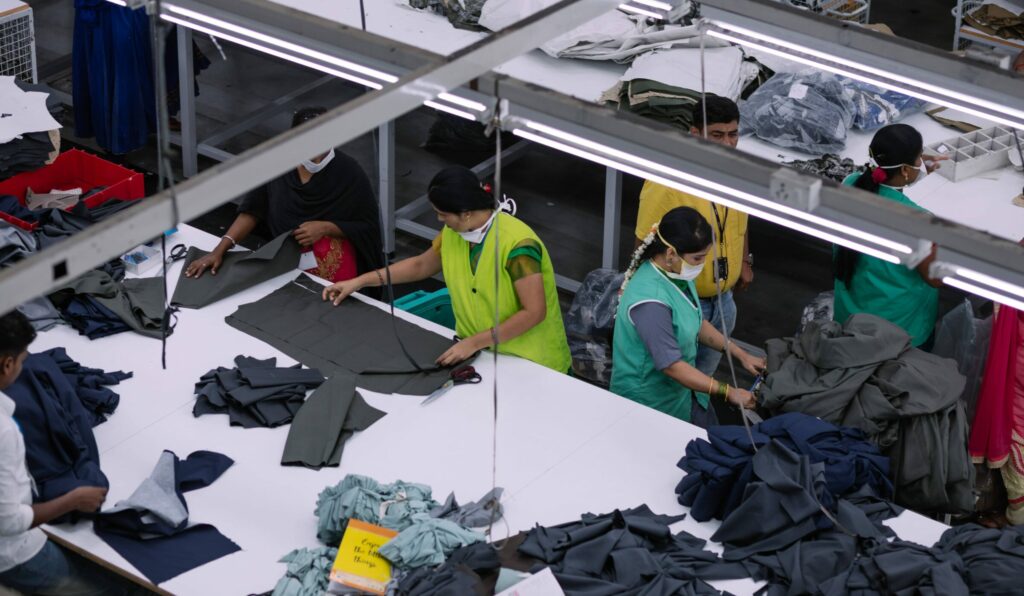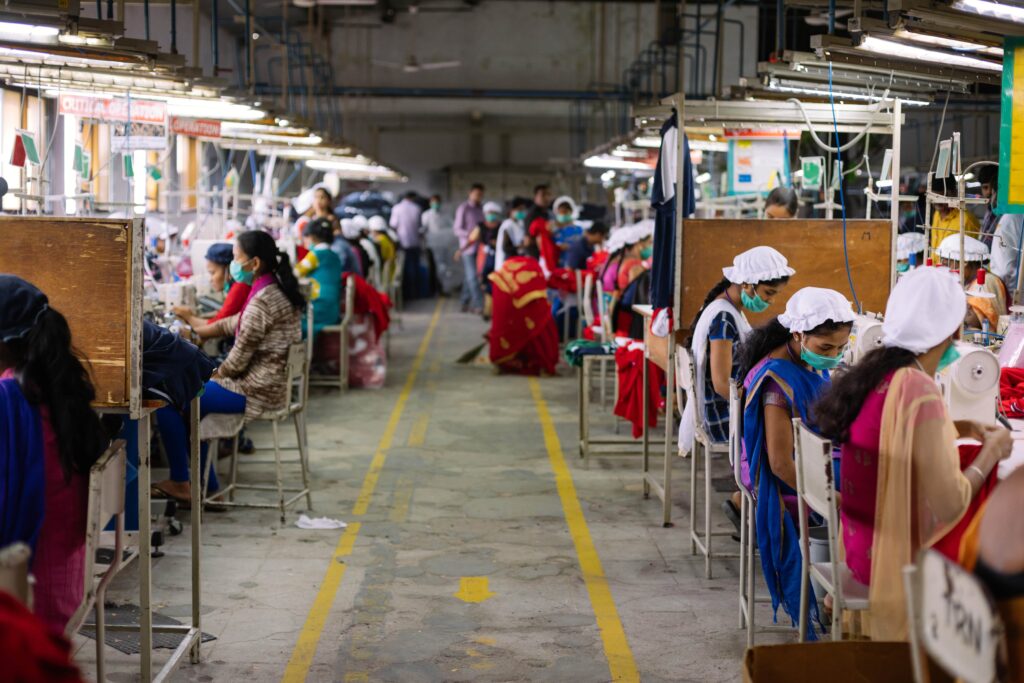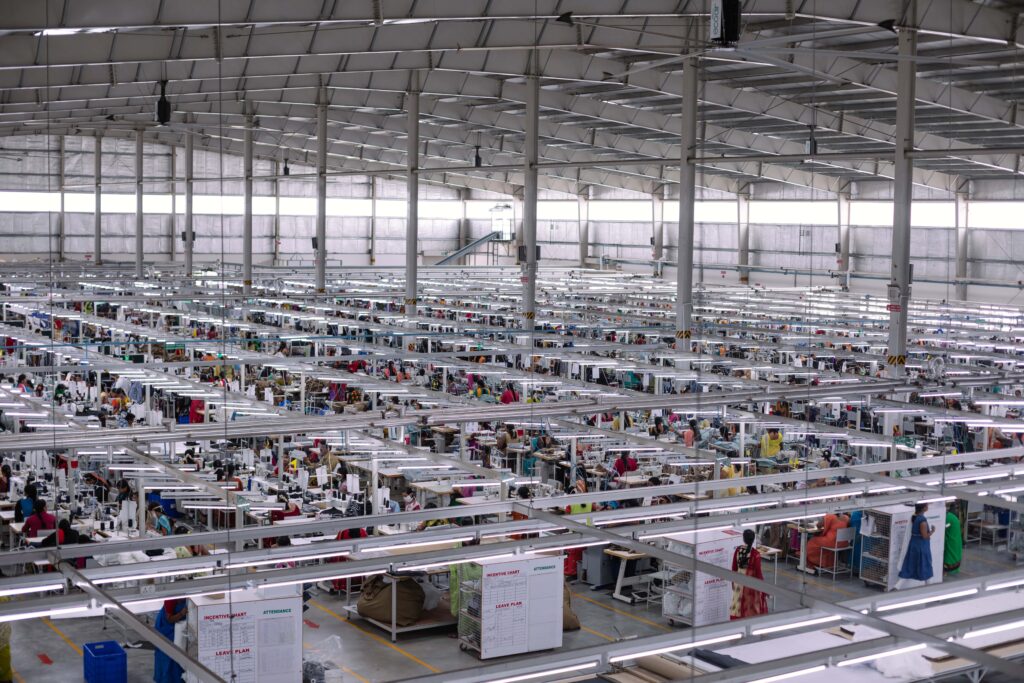Good Business Lab
Rapid climate change and global warming have highlighted the importance of thinking through and adopting technologies and strategies for mitigation. Businesses are key to world environmental outcomes, and to mitigating adverse effects for workers. Climate induced loss in labour productivity and the growing cost of production with growing energy and fuel demand are primary concerns impacting the bottom line.
The effects of climate change and global warming are not experienced equally by everyone. People who work outdoors or in hot indoor environments are already facing many climate and weather related hazards on the job. These are being exacerbated by ecological changes and socioeconomic disruptions, for among the worst affected are workers from lowered-income and immigrant communities.
The impacts on these workers range from safety hazards and illness due to work related exposures, to community challenges and mental stress. These include heat stress, lowered productivity, risk of injury, food insecurity, forced displacement, socioeconomic or political instability, and more.
Climate action for vulnerable workers therefore is a need of the hour. To achieve a just transition, we need to create decent work as an essential dimension of mitigating climate change, which will need an intersectional approach that can bring together climate action and worker well-being. The work discussed here focuses on energy efficiency and indoor air pollutants in particular.
Our earlier research showed how productivity losses are linked to heat stress and worker exposure to indoor particulate matter in unhealthy working conditions. By improving the work environment with energy saving interventions, we make a business case for climate intersectionality and worker well-being.
The existing studies have mostly shared information with firms on the direct benefits of energy efficiency in terms of savings. However, we partnered with Shahi Exports, India’s largest apparel export house, to test the impact of replacing fluorescent lights with LEDs in 26 of their factories. We found that:
- Replacing fluorescents with LEDs lowers energy consumption by some 85%, reducing the average indoor temperature by 2.4°C.
- It saved an average of 21,600 kWh of electricity per factory unit per year, in this case reducing electricity related emissions by about 3.73 tC emissions per unit per year.
- Replacing fluorescents with LEDs had a large impact on hotter days, when heat stress reduces worker productivity the most. In terms of productivity there was almost no impact on cooler days. In other words, the relationship of temperature and productivity is not linear. The largest declines in worker efficiency due to heat stress occurred at the highest temperatures. By reducing indoor temperatures, LED lights were able to offset part of this decline.
- The time taken for firms to earn back their investment in LED replacement was less than a year, due to improvements in the work environment caused by the lower ambient temperature and the consequent increase in worker productivity. Calculated in terms of energy savings alone, the time taken to earn back their investment would have been 3.5 years.
- Our data show that the average factory gained about 2,800 USD in power consumption savings and about 7,500 USD in productivity gains with LED replacement.
In hot climates, LED lighting, compared to fluorescent lighting, is much more affordable than a simple comparison of energy cost savings would suggest. All new Shahi Exports factories now use LED lighting. Our measurable evidence thus acted as a key incentive for businesses to increase their energy efficiency and make the work environment more comfortable for workers.
On indoor air pollution, our earlier research linked ambient air quality, particularly exposure to particulate matter in the workplace, with productivity losses. An increase by a standard deviation in the average level of fine particulate matter experienced by workers on the line in an hour was found to reduce productivity by 0.3 to 0.4 percentage points. Consequently, this resulted in an estimated loss of roughly 100,000 USD in revenue (0.5% of the annual revenue). In response to the lowered productivity as a result of pollution shocks, managers also respond by frequently reallocating workers to different tasks in a production line.
The findings on indoor air pollution ring true across industries including the micro, small and medium enterprises (MSMEs) that contribute 30% of GDP in India. The Bureau of Energy Efficiency in India estimated the energy consumption of MSMEs at 70 Mt of oil equivalent in 2017, projected to grow at 6% annually. It has also argued that the pollution per unit of production is higher amongst MSMEs than larger firms, owing to information gaps, inefficient technologies, poor management practices and poor regulatory oversight. Worker exposure to heat, air pollutants and more in addition to these practices poses higher risks to the health, survival and productivity of largely impoverished MSME workers, estimated to number 110 million people in India in 2021.
The adoption of energy efficient technologies has been low amongst MSMEs, although surveys of SME owners have demonstrated their willingness to adopt simple, cost-effective solutions. They perceive energy efficiency as low-hanging fruit in the path to ecological sustainability. Our work shows that there is scope to solve the problem of low adoption of sustainable, energy-efficient solutions by small/medium enterprises in India. And in tandem, the large degree of informalisation and resulting absence of decent work in MSMEs can be overcome with enabling policy frameworks, increased access to finance, and information and capacity building for better work conditions and decent opportunities at MSMEs.
Our future projects will continue to explore the use of innovative information strategies to help other micro, small and medium enterprises adopt more energy-efficient and environmentally friendly technologies that also benefit their workers. An example is our upcoming pilot targeting the efficiency of steam boilers in textile MSME clusters in India. To generate benefits for the ecosystem and for workers, the steam boilers’ efficiency will be improved by installing air control systems, insulating valves, and more, to result in direct fuel savings and lowered greenhouse emissions, a lighter workload for frontline workers, and lower emissions of suspended particulate matter and associated pollutants.
Through our projects we hope to inform and change the way governments and non-government organisations address the information barrier, and improve adoption rates and lower emission rates effectively. Thus we seek to further harness the potential of the overlapping space of climate action and worker well-being, across industries. We think the pursuit of worker well-being directly aids a just transition, by greening the economy in a way that is fair and inclusive, and leaves no one behind.



















